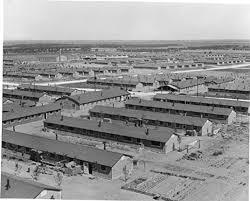
Camp Amache. If I didn’t know better, I would have thought it was the name of some long forgotten Native American village. Instead, it is a symbol of one of the uglier sides of American history.
Our local public radio has been broadcasting a series called Order 9066. By signing Order 9066, Franklin Roosevelt effectively ordered over 100,000 Japanese-Americans rounded up and put into camps. Having lived in Mammoth Lakes, I knew the story of the internment camps after visiting Manzanar, located on the eastern side of the Sierra.
What I didn’t know is that one of the ten camps was located in Colorado. In fact, the governor volunteered Colorado to take in the evacuees after the Order had been signed. Thousands of Japanese-Americans from California were brought to Granada, Colorado to live in Camp Amache.
Like most of the camps, the living conditions were fairly spartan, with a family of seven sharing a room about 20 x 20 feet. For families coming from southern California, the weather presented a major challenge especially during the cold winter months. It reached its peak population of over 7,500 in October, 1942, just a few months after it opened. By September, 1945, the camp had closed and the Japanese- Americans had all been released. But that didn’t mean that their lives improved, as they faced racism and bigotry by landlords and businesses alike.
Strangely, less than an hour from Granada, is the site of another horrific tragedy in our country’s history at Sand Creek Massacre National Historic Site. On November 29, 1864, Colonel John Chivington and his soldiers attacked a village of Cheyenne and Arapahoe Indians along the banks of Sand Creek. As women and children frantically tried to excavate pits from the side of the creek to protect themselves, soldiers gunned them down. By day’s end, around 230 Native Americans — mostly women, children and the elderly – had been murdered in cold blood.
In 2000, letters from two soldiers were discovered in Denver, detailing the grisly details of the day. But they also showed that up to 100 soldiers resisted the orders of the commanding officer, refusing to take part.
Indeed, a visit to southeastern Colorado reveals much about our country’s history, even the darker moments. Both Sand Creek and Granada are located just east of Pueblo, about a 3-hour drive from Denver. The weather can be quite hot in summer, so this makes for a better trip during fall.
Though unpleasant, it’s important to learn about the darker moments of our history, lest we repeat them again in the future. I’m reminded of this as I watched Latino immigrants being put into fenced enclosures these past few months. History never looks kindly on these events in hindsight.

